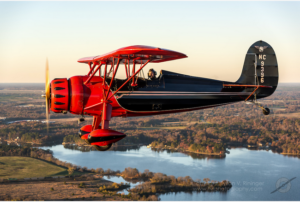Project Description

MPH
SEATS
Fairchild 22 Model C7
Role: Two-seat light touring or training monoplane
National Origin: United States
Manufacturer: Fairchild Aircraft Corporation
First Flight: 1931
Primary User: US Private Owner Market
Number Built: 127
The aircraft was designed by Kreider-Reisner during negotiations by Sherman Fairchild to take a major share in the company. Marketed as the Fairchild 22 Model C7 the aircraft was certified in March 1931. The Fairchild 22 was a mixed-construction braced parasol-wing monoplane with a fixed tailwheel landing gear and a braced tail unit. It had two tandem open cockpits and was initially powered by a 80hp (60kW) Armstrong Siddeley Genet radial engine. After test flying the prototype the first production aircraft were re-engined with a 75hp (56kW) Michigan Rover inverted inline engine. The aircraft was fitted with both inline and radial piston engines.
General characteristics
- Crew: two
- Length: 22 ft 3 in (6.78 m)
- Wingspan: 33 ft 0 in (10.06 m)
- Height: 7 ft 11 in (2.41 m)
- Wing area: 173 ft2 (16.07 m2)
- Empty weight: 1102 lb (500 kg)
- Gross weight: 1750 lb (794 kg)
- Powerplant: 1 × Warner Super Scarab 7-cyliner radial piston engine, 145 hp (108 kW
Performance
- Maximum speed: 133 mph (214 km/h)
- Range: 350 miles (563 km)
- Service ceiling: 20,000 ft (6095 m)